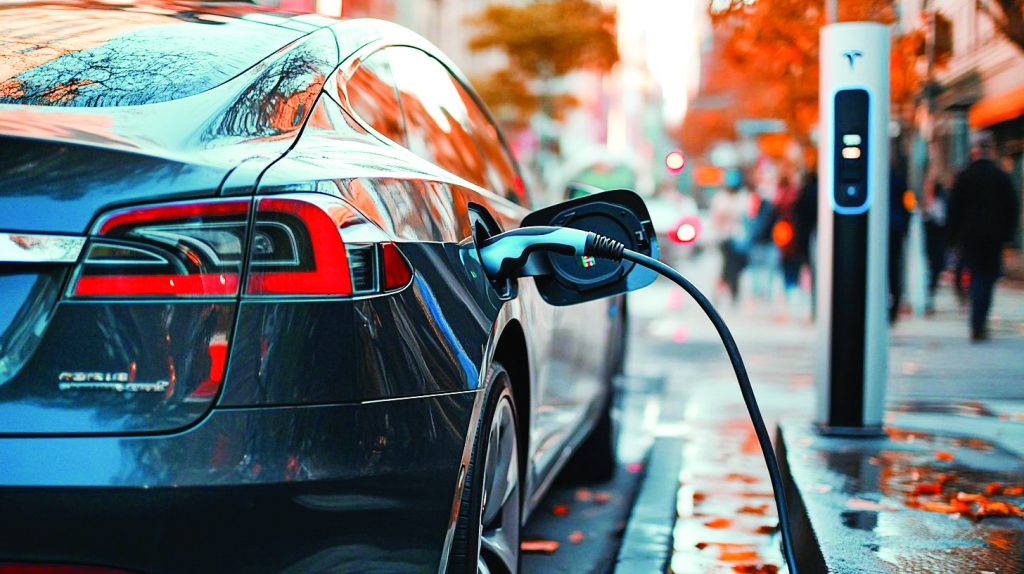The global automotive industry is undergoing a revolutionary transformation, driven largely by the rapid growth of the electric vehicle (EV) market. Over the past decade, electric vehicles have transitioned from a niche product to mainstream, fueled by technological advancements, environmental concerns, and shifting consumer preferences. EVs are seen as a crucial step toward reducing global carbon emissions, alleviating dependence on fossil fuels, and paving the way for sustainable transportation systems.
Words: Jonathan Westbrook.

BYD modern electric vehicle.
Market Growth and Dynamics
The electric vehicle market has been experiencing exponential growth, particularly since 2018. According to market research, global EV sales reached over 10 million units by 2023, a sharp increase compared to less than one million in 2014. This growth can be attributed to several factors:
Government Policies and Incentives: Many governments worldwide have introduced policies to encourage EV adoption, such as tax credits, subsidies, and incentives for both consumers and manufacturers. Countries like Norway, China, and Germany have become leading markets for EVs due to their robust policy frameworks. Additionally, several nations have committed to phasing out the sale of internal combustion engine (ICE) vehicles in the coming decades, further accelerating EV adoption.
Technological Advancements: One of the major challenges facing the EV industry has been the development of efficient, affordable battery technology.
Recent advancements in lithium-ion batteries have significantly reduced production costs while increasing battery capacity and range. Battery costs have dropped from over USD 1,200 per kilowatt-hour in 2010 to around USD 130 per kilowatt-hour by 2023, making EVs more accessible to the average consumer.
Environmental Concerns: The growing awareness of climate change and environmental degradation has led to an increased demand for greener technologies. EVs, which produce no tailpipe emissions, are seen as a key solution to reducing the transportation sector’s carbon footprint, which is responsible for a significant portion of global greenhouse gas emissions.
Corporate Commitments: Major automakers, such as Tesla, General Motors, Ford, and Volkswagen, have made significant investments in electric mobility, committing to electrifying large portions of their fleets in the next decade. Tesla, in particular, has played a pioneering role in popularizing EVs, setting high industry standards with its cutting-edge technology and long-range models.
Key Market Segments
The EV market can be divided into several segments based on vehicle types, propulsion systems, and regions.
Vehicle Types
Battery Electric Vehicles (BEVs): BEVs are fully electric vehicles that rely solely on batteries for power. They make up the majority of EVs on the road today. Notable examples include the Tesla Model 3, Nissan Leaf, and Chevrolet Bolt.
Plug-in Hybrid Electric Vehicles (PHEVs): PHEVs have both an electric motor and an internal combustion engine (ICE). They can operate in all-electric mode for shorter distances and switch to the ICE for extended range. Examples include the Toyota Prius Prime and the BMW 330e.
Hybrid Electric Vehicles (HEVs): While HEVs cannot be plugged in, they combine a traditional ICE with an electric motor to improve fuel efficiency. The Toyota Prius is a leading model in this category.
Propulsion Systems
Lithium-ion Batteries: These are the most common power source for EVs due to their high energy density, efficiency, and relatively low cost.
Solid-State Batteries: A new, emerging technology that promises greater energy density, faster charging times, and improved safety. However, solid-state batteries are still in the research and development phase.
Hydrogen Fuel Cells: Though less common, hydrogen-powered fuel cell vehicles (FCVs) are gaining traction in specific markets. They produce zero emissions and are refueled using hydrogen, but they require a more robust refueling infrastructure, which is still under development.
EVs, which produce no tailpipe emissions, are seen as a key solution to reducing the transportation sector’s carbon footprint, which is responsible for a significant portion of global greenhouse gas emissions.

An electric vehicle charging at a station.

The life cycle of an electric battery.
Regional Markets
China: China is the world’s largest EV market, accounting for around 60 percent of global EV sales. The Chinese government’s aggressive policies, incentives, and investments in EV infrastructure have fueled this growth. Europe: Europe is another leading market, with countries like Norway, Germany, and the UK leading the way. Stricter emission regulations and strong consumer demand for eco-friendly vehicles have helped boost EV sales in the region.
United States: While the U.S. has been slower to adopt EVs compared to China and Europe, it remains a significant market. California, in particular, has been a hotbed for EV innovation, and federal tax incentives have further encouraged adoption.
The future of the electric vehicle market looks promising, with estimates predicting that by 2030, EVs could make up more than 40 percent of new vehicle sales globally.
Challenges Facing the EV Market
Despite the rapid growth and enthusiasm around EVs, the market faces several challenges:
Charging Infrastructure: A robust, widespread charging network is critical to the success of EVs. Many potential buyers still express “range anxiety,” fearing that they won’t be able to charge their vehicles conveniently during long trips. While countries like Norway and the Netherlands have made significant progress in building EV charging infrastructure, others lag behind.
Battery Costs and Supply Chain Issues: While battery costs have decreased significantly, the supply chain for raw materials like lithium, cobalt, and nickel remains volatile. Environmental and ethical concerns about mining these materials are also growing.
Affordability: While EVs have become more affordable in recent years, they still carry a price premium compared to traditional ICE vehicles. This limits their appeal, particularly in developing markets, where lower-income consumers are less likely to afford the higher upfront costs, even though operating costs for EVs are generally lower.
Energy Sources: The environmental benefits of EVs depend on the energy sources used to generate electricity. In regions where electricity is still predominantly generated from coal or other fossil fuels, the overall reduction in emissions from switching to EVs may be less significant.
Future Outlook
The future of the electric vehicle market looks promising, with estimates predicting that by 2030, EVs could make up more than 40 percent of new vehicle sales globally. Key trends that are expected to shape the market include: Autonomous Vehicles and Electrification: The convergence of EVs and autonomous driving technologies is likely to revolutionize the automotive industry further. Fully autonomous electric vehicles (AEVs) could transform public transportation and the logistics sector, providing sustainable, efficient solutions.
Increased Range and Performance: As battery technology continues to evolve, EVs are expected to offer greater range and faster charging times, addressing two of the biggest consumer concerns.
Green Energy Integration: As more countries shift towards renewable energy sources like wind and solar power, the sustainability benefits of EVs will increase, reducing their overall carbon footprint.
Circular Economy and Recycling: The EV market is likely to move towards a circular economy model, focusing on recycling batteries and reusing materials to minimize environmental impact. Battery recycling initiatives and second- life applications for EV batteries are already gaining traction.
The electric vehicle market is poised to play a critical role in the future of transportation, driven by technological innovations, environmental imperatives, and evolving consumer preferences. While challenges remain, continued advancements in battery technology, the expansion of charging infrastructure, and supportive government policies are expected to accelerate the transition from fossil-fuel-powered vehicles to electric mobility, marking a new era in the automotive industry.

In the background of EVs, reflecting the connection between green energy and electric vehicles.





